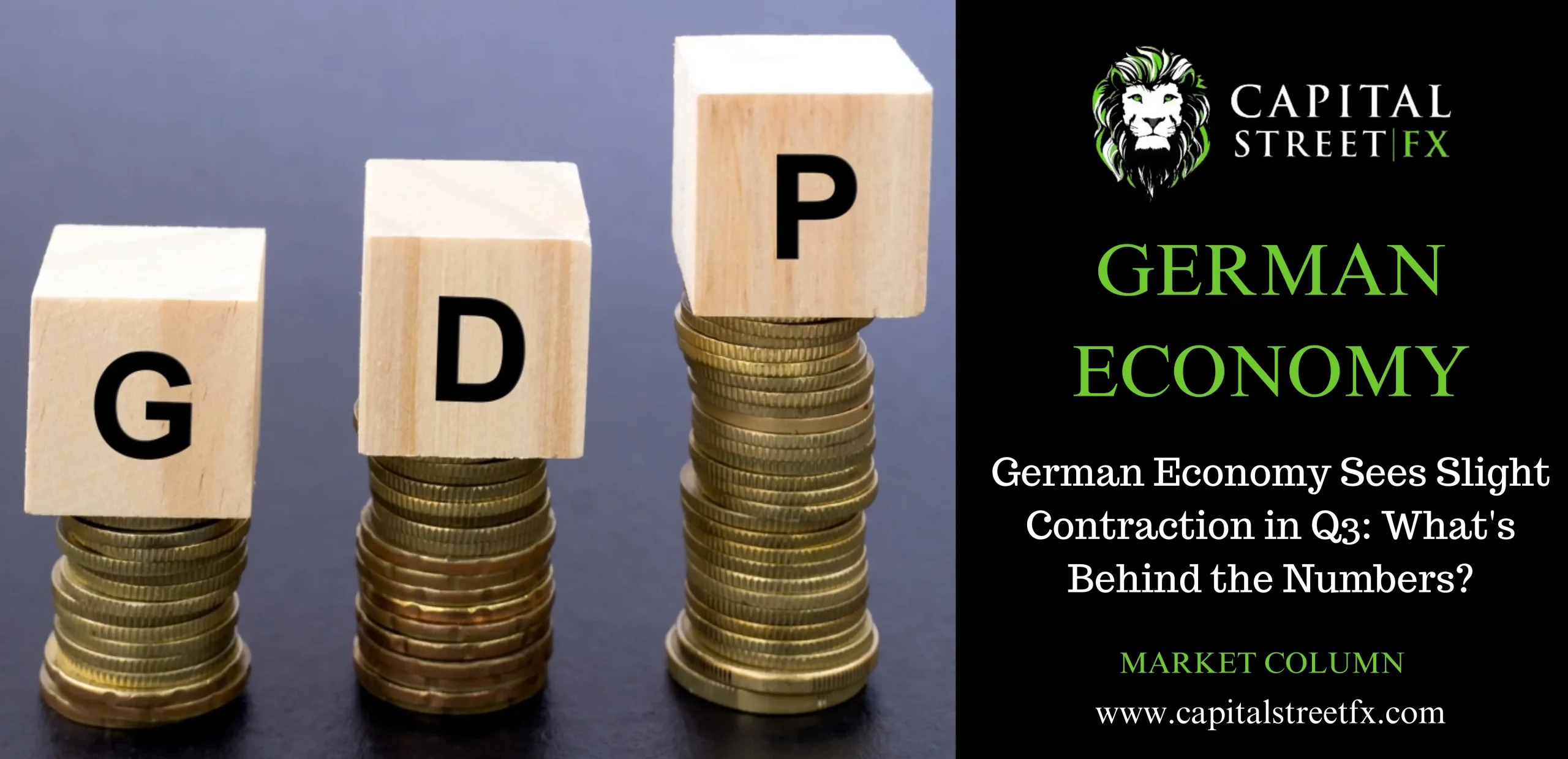German Economy Sees Slight Contraction in Q3: What’s Behind the Numbers?
Introduction
The German economy, often regarded as the powerhouse of Europe, faced some challenging headwinds in the third quarter of the year. In this article, we’ll delve into the details of this economic downturn and explore the factors contributing to it.
Understanding the Numbers
Let’s start by examining the hard data. According to the Federal Statistics Office, Germany’s Gross Domestic Product (GDP) saw a slight decline of 0.1% in adjusted terms for the third quarter. While this contraction might not be as severe as some had predicted, it’s still a cause for concern.
Factors Behind the Contraction
1. Weak Purchasing Power
One of the key factors contributing to Germany’s economic woes is the weakened purchasing power of its citizens. High inflation rates have eroded the purchasing power of consumers, leading to reduced spending, especially in the retail sector.
2. Elevated Interest Rates
Another challenge facing the German economy is the burden of elevated interest rates. This makes borrowing more expensive for both businesses and individuals, hindering investment and consumption.
3. Monetary Policy Tightening
The European Central Bank’s (ECB) decision to tighten its monetary policy has sent ripples through the Eurozone. For Germany, this means tighter credit conditions and potentially slower economic growth.
4. Ongoing Inventory Cycle Challenges
Inventory management is a critical aspect of any economy. Germany is grappling with challenges in maintaining an efficient inventory cycle, which can lead to inefficiencies in production and distribution.
5. Geopolitical Uncertainties
The world is no stranger to geopolitical uncertainties. These uncertainties can have a significant impact on trade, foreign investments, and overall economic stability, all of which affect Germany’s economy.
Expert Opinions
Carsten Brzeski on Germany’s Economic Performance
Carsten Brzeski, global head of macro at ING, points out that Germany’s economic performance underscores its status as one of the growth laggards in the Eurozone. The challenges mentioned above have created a climate of uncertainty for the German economy.
The Future Outlook
Looking ahead, it’s not all rosy. Brzeski believes that Germany might continue to teeter between slight contraction and stagnation for the rest of the year and into the next. Commerzbank shares this outlook, anticipating further economic contraction in the coming months.
Inflation Worries
Inflation remains a key concern. Higher-than-expected inflation can prolong central banks’ efforts to tighten monetary policy and keep interest rates elevated. As Germany’s headline Consumer Price Index (CPI) rate is expected to fall in October, economists are closely monitoring inflation data.
Revisions in Economic Data
Interestingly, the statistics office revised the second-quarter figure to show a modest 0.1% expansion. However, the first-quarter figure was revised to stagnation, overturning the previous contraction that had pushed the economy into a technical recession (defined as two consecutive quarters of GDP contraction).
Conclusion
In conclusion, the German economy is facing challenges from multiple fronts, including weak purchasing power, elevated interest rates, and ongoing inventory cycle issues. Geopolitical uncertainties add to the complexity. While experts are not entirely pessimistic, there is still a fair share of uncertainty in the air.

